A ROCKET FOR YOUR GARDEN
And a Welcome Dame
There’s a rocket in my garden, and it’s not in the sky. The rocket? It’s dame’s rocket (Hesperis matronalis). Individual plants are ho-hum, but these plants like to congregate. Here on the farmden and beyond, dame’s rocket is now blanketing the dappled shade of woodlands and roadsides with its white, mauve, or purple flowers. In mass, they will bowl you over with their sweet scent, especially pervasive on late spring and early summer evenings.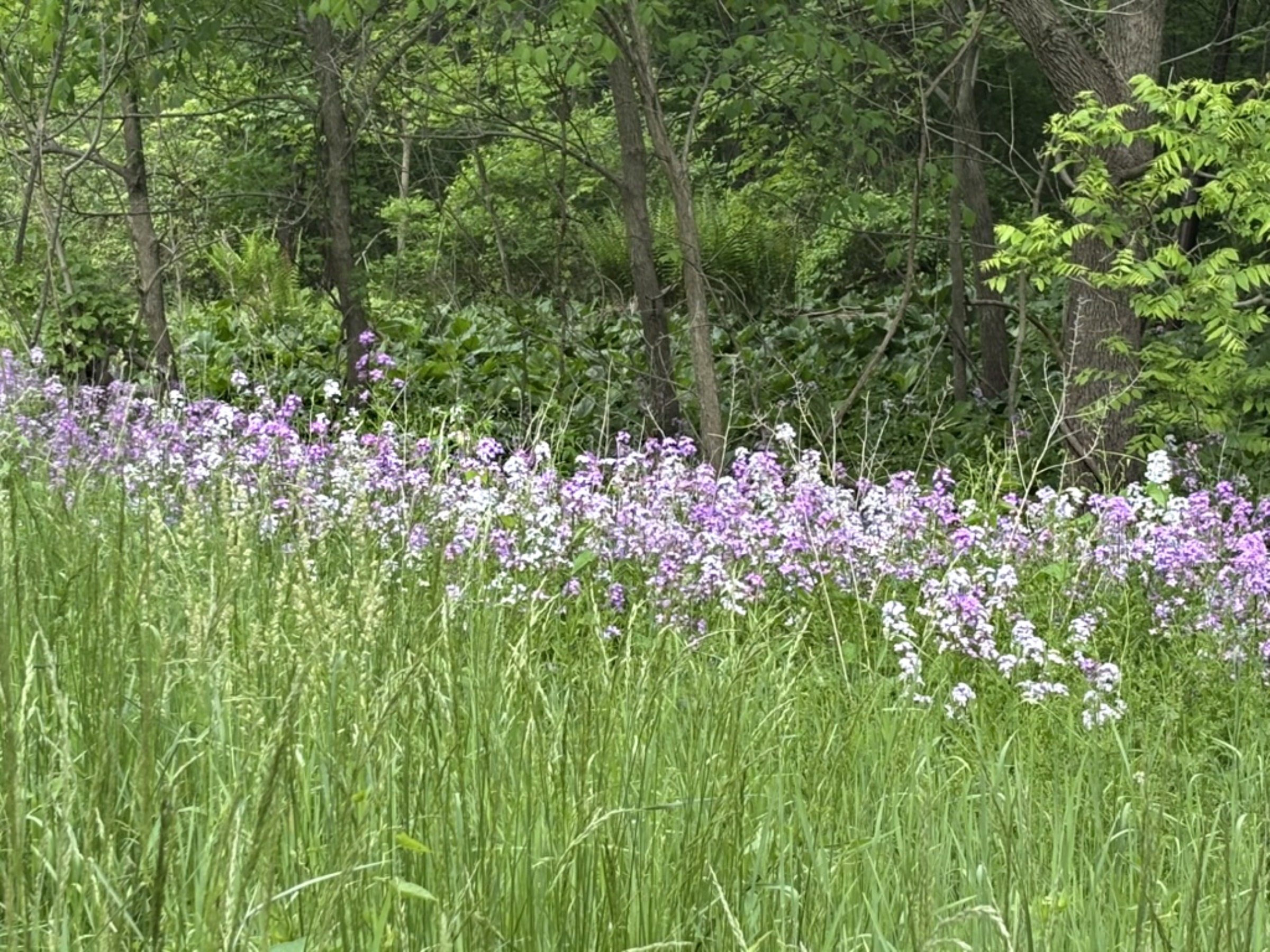
You might make the mistake of thinking that dame’s rocket is a native plant. You may, after all, have seen it in Quebec, in Georgia, or as far west as Iowa. But no, dame’s rocket is a native of southern Europe and western Asia. Early on, it was brought over and cultivated in American gardens, then escaped to find a happy home in the wilds of eastern North America.
You might mistake dame’s rocket for phlox. Both have sweetly scented flowers in similar shapes and colors, and flowers of both plants are held clustered atop two or three foot high stalks. Look more closely, though, and you’ll find that phlox flower parts are in fives. Dame’s rocket, in contrast, has four petals. And they are in the shape of a cross, which is a giveaway for members of the cabbage family.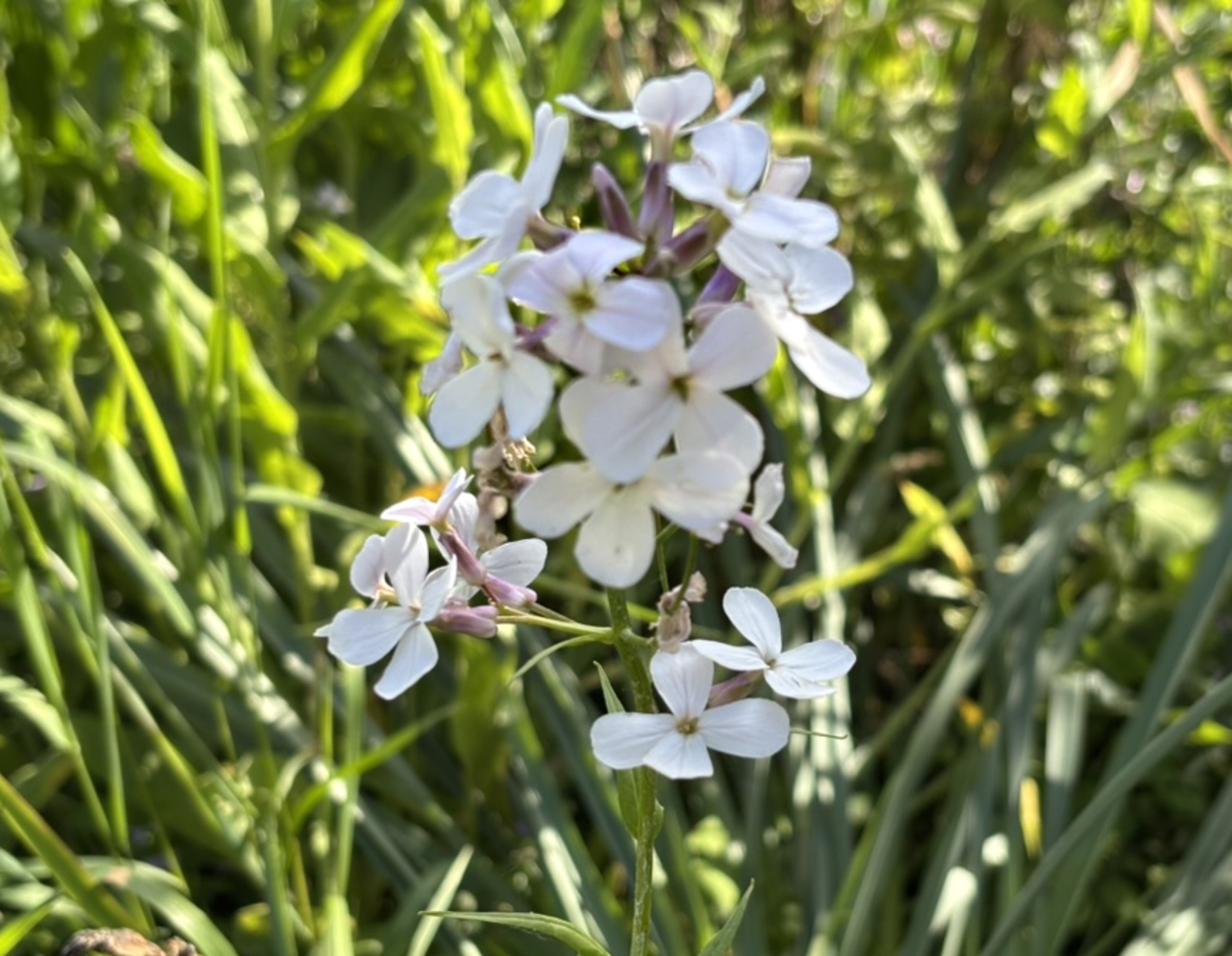
Wild Salads
That cabbage association is how the “rocket” got into the name. Many cabbage relatives have this in their name, derived from the Latin word eruca. The familiar vegetable arugula — another cabbage kin — has also been called rucola or rocket..
If you think it odd that a kin of cabbage should have a sweet scent, take a whiff of sweet alyssum.
Dame’s rocket has a lot going for it. Besides being pretty and scented, the flowers bloom for weeks and weeks. Judging from where the plants have happily settled, they obviously tolerate cold and shade. They even tolerate dry shade, with some sacrifice to how long they bloom. And pests? None to speak of.
Dame’s rocket was once a popular garden plant, especially in cottage style gardens. Perhaps it’s now so rarely cultivated because it is so abundant in the wild. Perhaps it is now so rarely cultivated because dame’s rocket is usually biennial, individual plants just growing leaves their first year, flowering their second year, then dying.
Being a biennial should not discredit dame’s rocket, though, because the plant is a self-seeding biennial. A planting eventually develops an ongoing population of plants of both ages, providing sufficient blooms every year. Unless, that is, you start with dame’s rockets having double flowers. Seedlings of these double flowered sorts revert back to single forms, so your planting would flower every year, but the flowers would be single.
Years ago, I planned to move dame’s rocket into my garden; there a few ways to do this. Plants or seeds are available commercially. If you ever do come across plants of one of those double-flowered dame’s rocket, the way to multiply it is by taking cuttings. Dame’s rocket can be weakly perennial, and new plants made from cuttings taken ever year or so can keep a double-flowered planting going.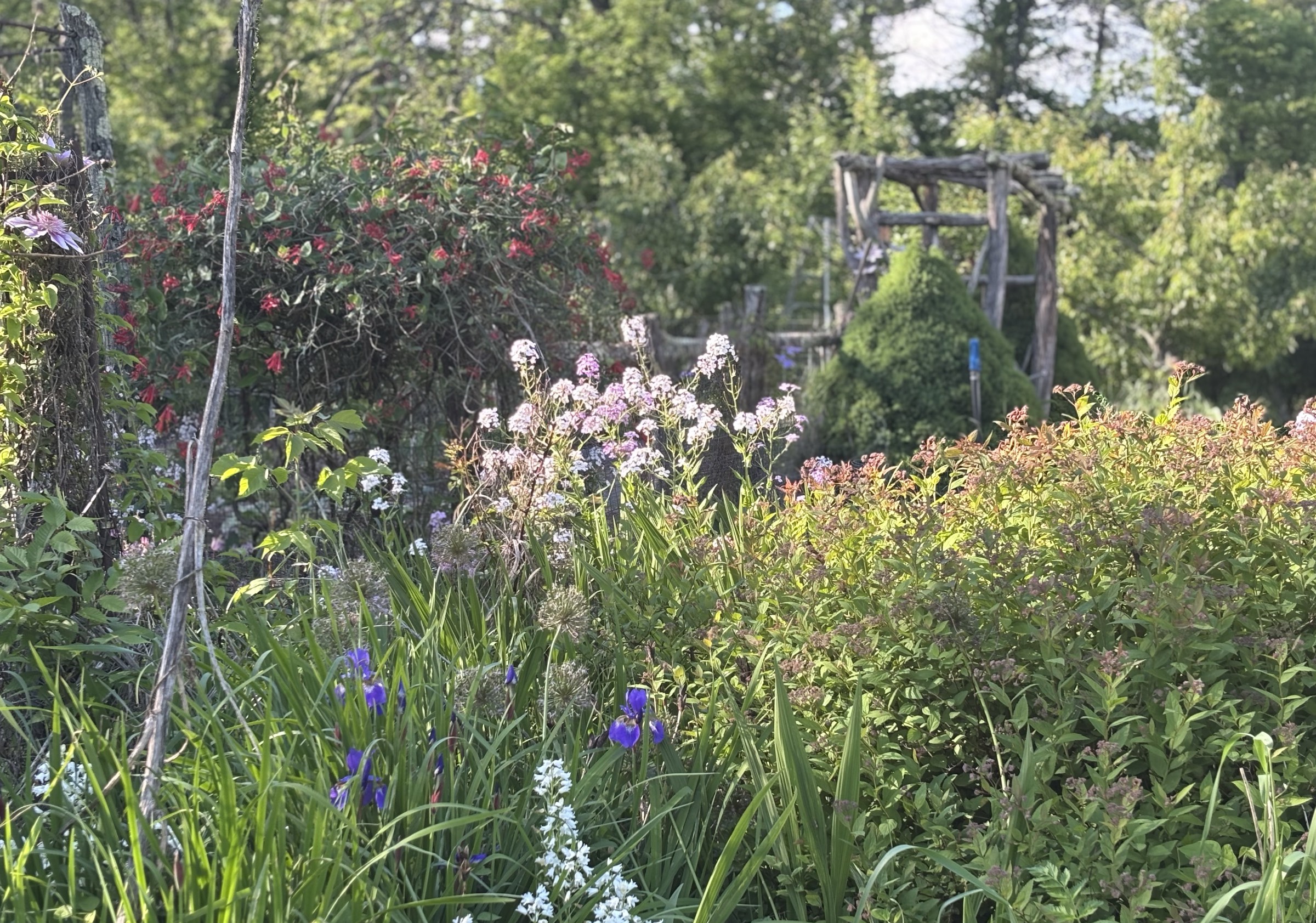
Those wild plants obviously make abundant seed every year, so another way to propagate them is to mark a few outstanding plants and collect seed from them. The blossoms are not double, but still, they are pretty and fragrant. Dame’s rocket seeds germinate readily and the seedlings are easy to grow.
Another possible way to get started with dame’s rocket is to transplant just a few wild plants into the garden, then coddle them for a couple of weeks with water and extra shade until roots settle into their new home.
Your first planting, whether from seeds or plants moved from the wild, will plant itself from then on. Have no fear: Although dame’s rocket self-sows, it rarely tries to take over, as do some other self-sowing biennials such as nicotiana or foxglove.
Now an Outlaw, But . . .
I recently discovered that the plant’s fecundity and nonnativeness has led it to be declared invasive in five state, here in New York being one of those states. (Others are Wisconsin, Connecticut, Massachussets, and Colorado. In Alberta, Canada, it’s considered a noxious weed.)
Wait! Before you begin to hate this plant, be aware that it is edible, just like another “rocket”, arugula. If it makes you feel better, you can chomp down and enjoy the leaves, the flower buds, the sprouted seeds, or, early in the season, the tender flowering shoots while, at the same time, limiting its spread.
Best of all, for me, is the plants’ fragrance and, I must admit, their abundance. The former characteristic is captured in some of the plants other names: Sweet rocket and Damask violet. “Violet” in the name referred to the sweet fragrance of dame’s rocket, also found in some violets. Damask referred to the city of Damascus but was mistaken for “dame.” And there you have it, dame’s rocket.

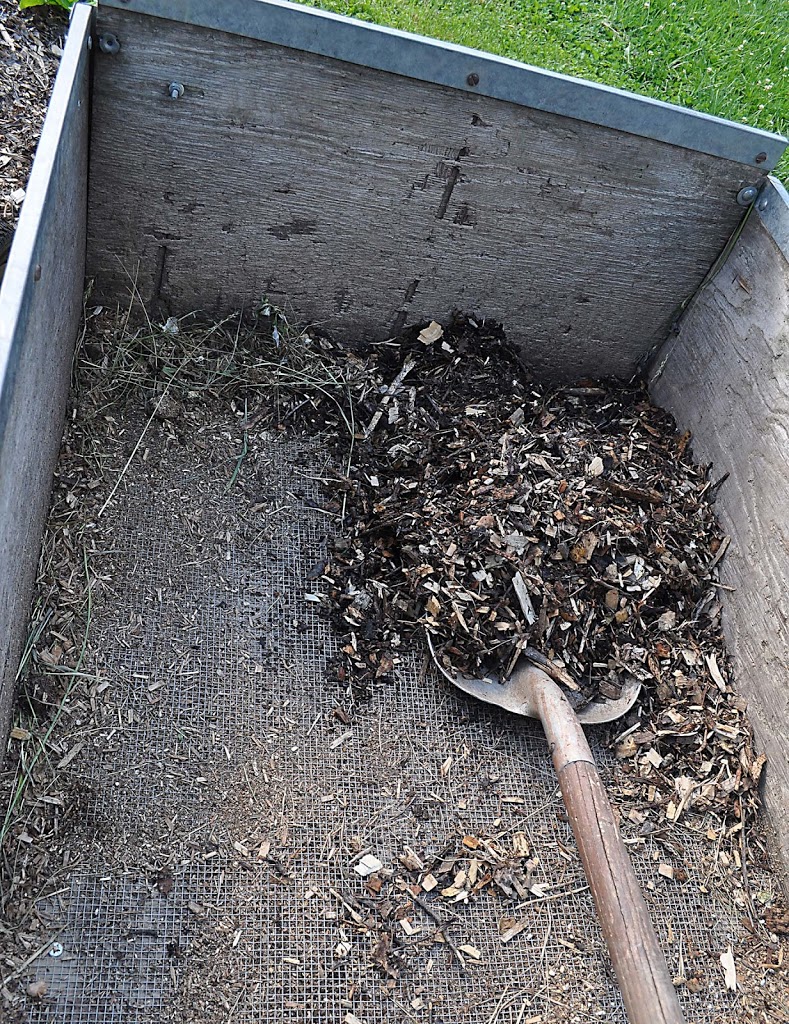

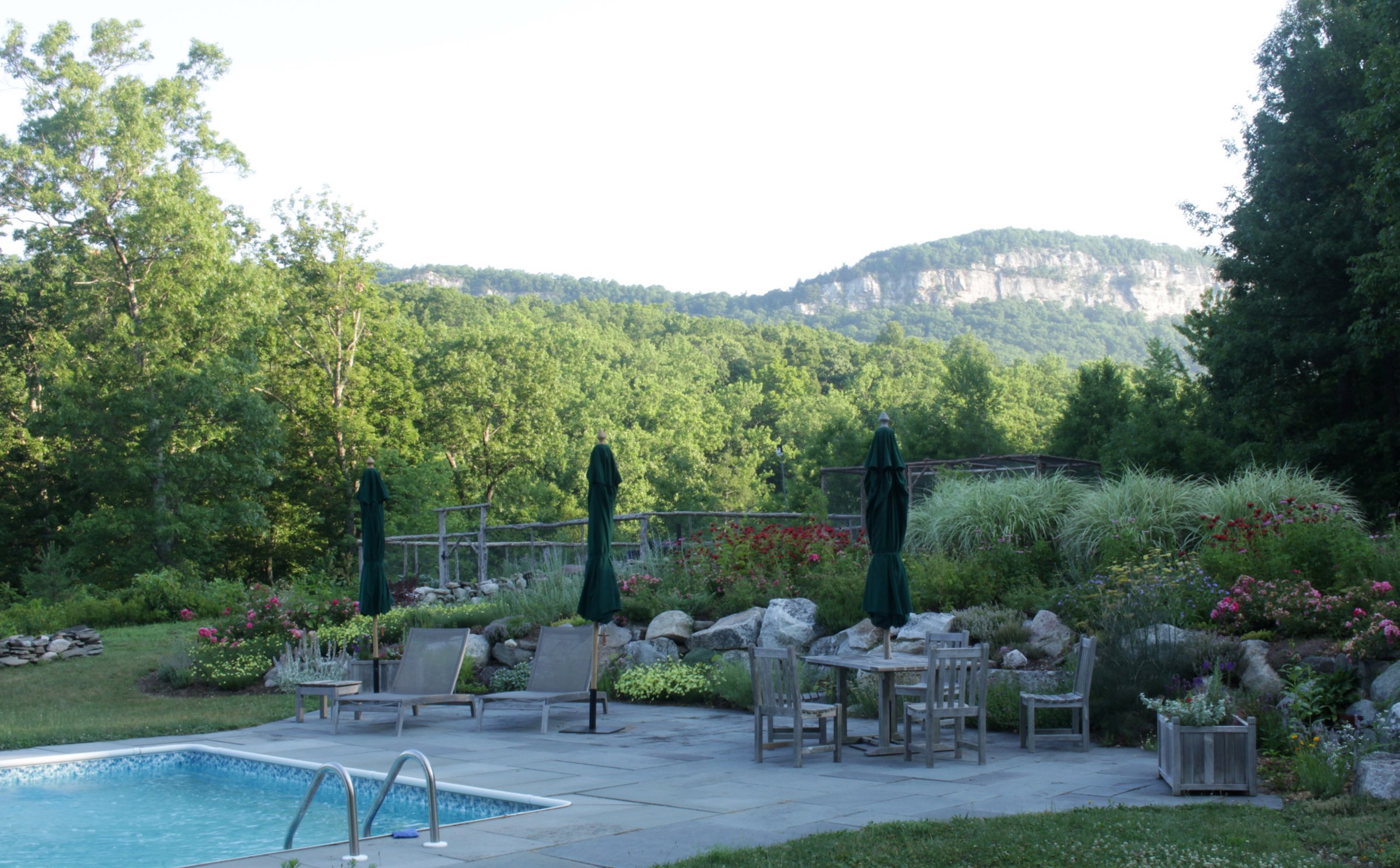

Masses of this plant are found along many roadsides in NJ.